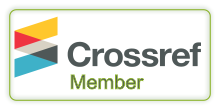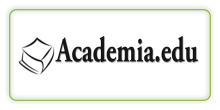RECENT RESEARCH ON THE CONCEPT OF THE HRIDAYA IN RACHANA SHARIRA, AND ITS RELATION WITH MODERN ANATOMY
DOI:
https://doi.org/10.29121/jahim.v4.i1.2024.44Keywords:
Hriday, Manas, Hriday Marma, Trimarma, KoshthangaAbstract [English]
Ayurveda states that Hridaya is one of the most important parts of the mortal body. An injury to it may affect it in severe conditions. The specific signs and symptoms of these conditions are well defined in Samhitas. Any kind of trauma or injury to it may lead to death. Therefore, it has been classified under Tri Marma and Dashsa pranayatana. Dwivedi & Kumar (2010). The term Hridaya indicates the organ which regulates the circulation of Prana throughout the body by collecting and diffusing rhythmically. Samhitas state that Hridaya performs several other functions along with the circulation of Prana (blood/ oxygen). These ancient classics mention that Hridaya controls the mortal body, sensations, and powers of logic, becoming the center of life and wit. Hence at one point the term Hridaya is considered as brain. Acharya Charaka and Sushruta have considered the Hridaya as a Koshthanga (organ present in Koshtha/trunk). This easily indicates that Hridaya is nothing but Urastha Hridaya (organ present in Koshtha/trunk). In this composition, an attempt has been made to connect references about Hridaya to modern anatomy through logical analysis of these references.
References
Agnivesha. (n.d.). Caraka Samhita (Vol. II). In L. Dwivedi, B. K. Dwivedi, & P. K. Goswami (Eds.), Chowkhamba Krishnadas Academy. Varanasi. Sharira Sthan, 2, 7-10.
Ambikadutta, S. K. (2011). Acharya Susruta, Susruta Samhita (Sharira Sthana, 6-9, 6-7, 4-30, 6-9, 5-5, 2-12, 5-26, 3-15). Varanasi: Chaukhambha Sanskrit Sansthan.
Ambikadutta, S. K. (2011). Acharya Susruta, Susruta Samhita (Sharira Sthana, Vol. 5(1), 11-13). Varanasi: Chaukhambha Sanskrit Sansthan.
Dreamstime. (n.d.). Pink Lotus Flower Blooming in Pool Summertime Bending Branch [Photograph].
Dwivedi, L., & Kumar, G. P. (2010). Agnivesha Retractor Acharya Charaka, Charaka Samhita (Sutra Sthana, Chapter 29, 1-2). Varanasi: Chowkhamba Krishnadas Academy.
Dwivedi, L., & Kumar, G. P. (2010). Agnivesha Retractor Acharya Charaka, Charaka Samhita Charaka Samhita (Vol. 2, Sharira Sthan, 6). Varanasi: Chowkhamba Krishnadas Academy.
Garg, K. (2018). BD Chaurasia's Human Anatomy Regional and Applied Dissection and Clinical Volume 1: Eighth Edition (Upper Limb Thorax). [Editors: Mittal, P. S., Chandrupatla, M.].( 286-293).
Gupta, K. A. (2012). Acharya Vagbhata, Ashtanga Hridaya (252). Varanasi: Chaukhambha Prakashan.
Gupta, K. A. (2012). Acharya Vagbhata, Ashtanga Hridaya (sutrasthan 12-6,7). Varanasi: Chaukhambha Prakashan.
National Center for Biotechnology Information. (2020). Clinical Features of Patients Infected with 2019 novel coronavirus in Wuhan, China. Clinical Infectious Diseases, 71(15), 1-8.
Newport Cardiac & Thoracic Surgery. (n.d.). Thoracic Aortic Aneurysm.
Shastri, K. A. (2012). Maharushi Sushruta, Sushrut Samhita (Ayurved tatvasandipika) [Edited by Kaviraj Ambikadatta]. Varanasi: Chaukhamba Sankrit Pratishthan. (Shairsthana chapter, 4-34).
Tiwary, P. V. (2002). Kashyapa Samhita / Vriddha Jeevaka Tantra: Text with English translation and commentary (127). Varanasi: Chaukhamba Vishwa Bharati.
Trikamji Acharya, V. Y., & Ram Acharya, N. R. (2009). Acharya Sushruta: Sushruta Samhita with Nibandha Sangraha Commentary of Acharya Dalhana (4: 31-116) Varanasi: Chaukhamba Sanskrit Sansthan.
Vidyadhar, S. (2017). Ayurveda Ka Itihas. Chaukhamba Sanskrit Pratisthan.
Vinay, K., Abbas, A. K., & Aster, J. C. (2014). Robbins and Cotran Pathologic Basis of Disease (9th South Asian ed., Vol. 2, 12-523). Reed Elsevier India Private Limited.






























